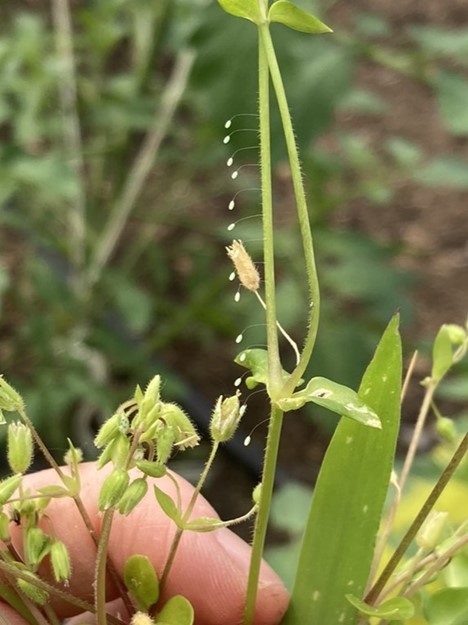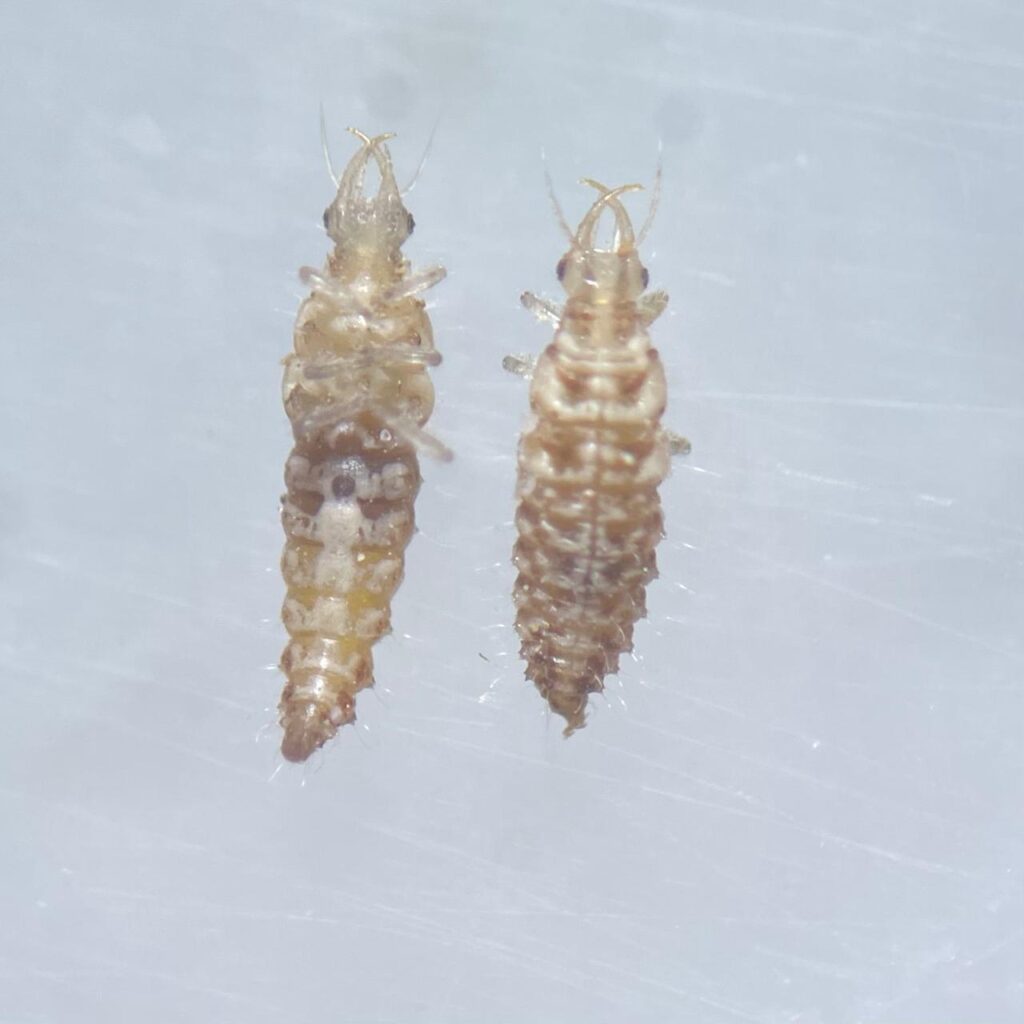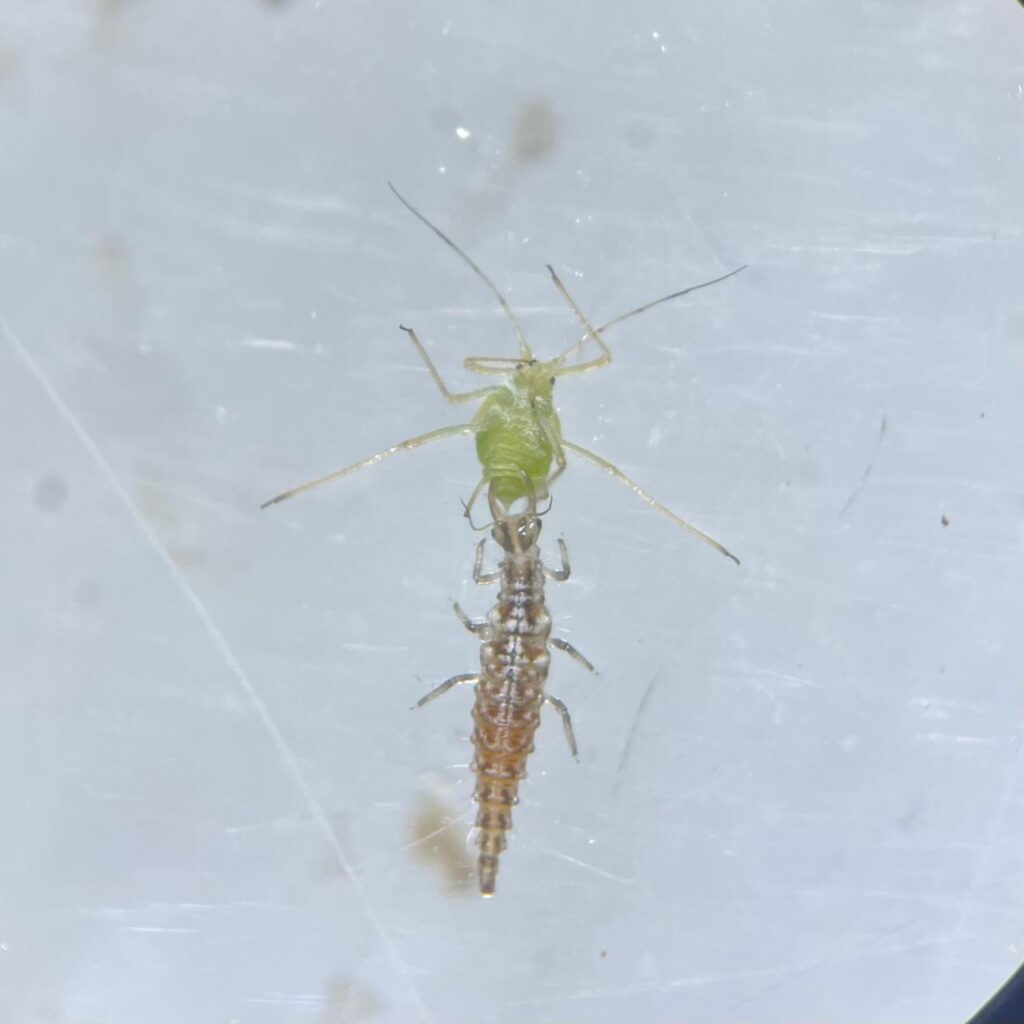Lacewings are a group of insects commonly found in Indiana and throughout the world. There are several species, but the most common that you will see in Indiana include the green lacewing and the brown lacewing. They belong to a unique order of insects, Neuroptera, and are commonly referred to as aphid lions. The life cycle of lacewings consists of four stages. First is the egg stage; they are oval-shaped with a pale green color and are deposited atop a silk stalk (Figure 1). This is to protect them from predators and eating one another when they hatch!
The larvae emerge around five days after the egg is laid. The larvae are recognizable by their grey to brown long segmented body and large pincer-like mouthparts (Figure 2). The larval stage lasts two to three weeks, during which time they look the same but get progressively larger. The larvae then form a silken cocoon in which they stay for 10-14 days while resting and transforming into an adult. The adults are easily recognizable by their big lacey wings (transparent or brown), long antennae, and 12-20 mm long soft body (Figure 3).



